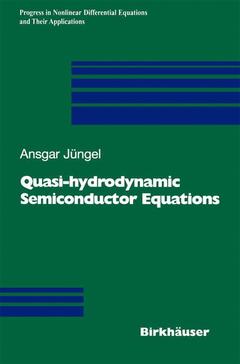Description
Quasi-hydrodynamic Semiconductor Equations, Softcover reprint of the original 1st ed. 2001
Progress in Nonlinear Differential Equations and Their Applications Series, Vol. 41
Author: Jüngel Ansgar
Language: English
Subject for Quasi-hydrodynamic Semiconductor Equations:
Publication date: 10-2012
293 p. · 15.5x23.5 cm · Paperback
Publication date: 02-2001
293 p. · 15.5x23.5 cm · Hardback
Description
/li>Contents
/li>
In this book a hierarchy of macroscopic models for semiconductor devices is presented. Three classes of models are studied in detail: isentropic drift-diffusion equations, energy-transport models, and quantum hydrodynamic equations. The derivation of each of the models is shown, including physical discussions. Furthermore, the corresponding mathematical problems are analyzed, using modern techniques for nonlinear partial differential equations. The equations are discretized employing mixed finite-element methods. Also, numerical simulations for modern semiconductor devices are performed, showing the particular features of the models.
Modern analytical techniques have been used and further developed, such as positive solution methods, local energy methods for free-boundary problems and entropy methods.
The book is aimed at applied mathematicians and physicists interested in mathematics, as well as graduate and postdoc students and researchers in these fields.

